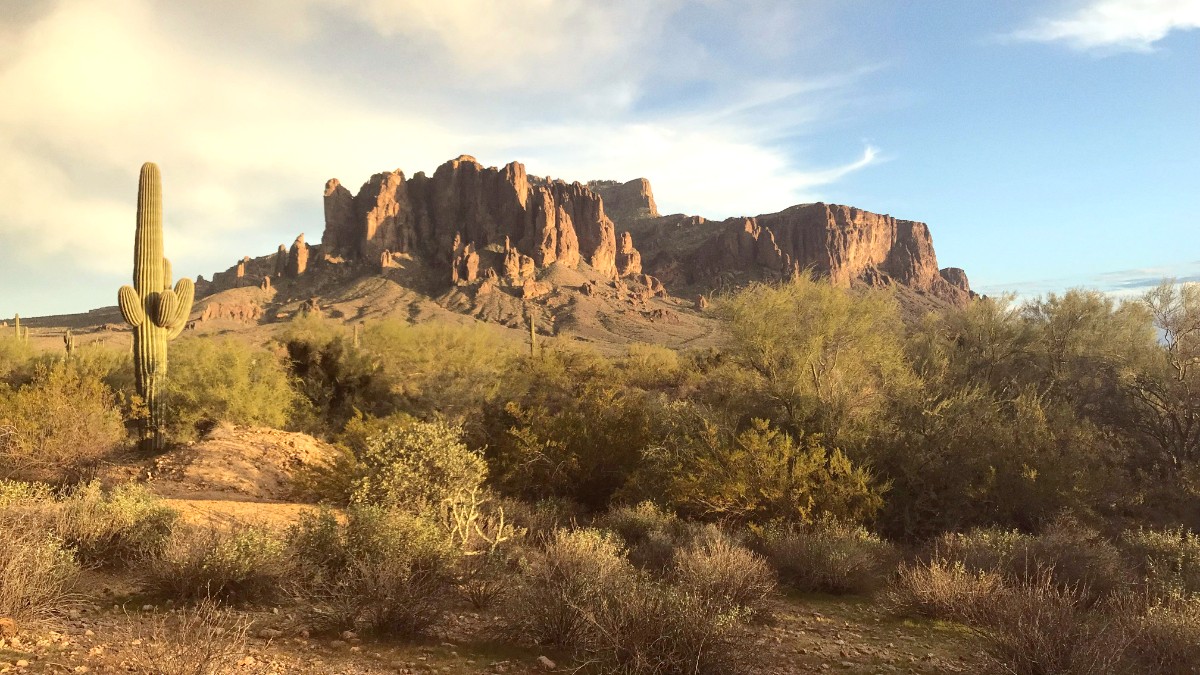
Arizona, USA
Sedona (approx. 2-hour drive north): Sedona presents a dramatic change in scenery and energy from Phoenix.
Tucson (approx. 2-hour drive south): Arizona's second-largest city. It features the historic Mission San Xavier del Bac, the eastern and western districts of Saguaro National Park (dense saguaro forests), the Pima Air & Space Museum, and the Arizona-Sonora Desert Museum (zoo, botanical garden, natural history museum combined).
Understand your choices for getting around and organizing your trips.
This option brings the most flexibility and high recommendation for all these destinations. Rental cars await in Phoenix.
Think about your priorities when choosing between a tour and independent travel.
Arizona's natural beauty stretches beyond Phoenix's city limits.
Lost Dutchman State Park (Apache Junction, approx. 45 min east): At the base of the Superstition Mountains. It has hiking trails, camping, and iconic views of the Flatiron rock formation. Many outdoor enthusiasts visit this place.
San Tan Mountain Regional Park (Queen Creek, approx. 1 hour southeast): Features diverse desert flora and fauna. It contains multiple trails for hiking, biking, and horseback riding.
Apache Trail Scenic Byway (AZ-88, partly unpaved, check conditions): This historic route winds through the Superstition Mountains, passing Canyon Lake, Apache Lake, and Roosevelt Lake. It presents stunning desert and mountain scenery.
Organ Pipe Cactus National Monument (approx. 3-hour drive south): It showcases unique organ pipe cacti, native only to this area of the Sonoran Desert. It brings a remote desert experience. More travel time is necessary, but a distinct landscape appears.
Wildflower blooms paint the desert, generally from late February through March or April, depending on rainfall.
Discover Arizona's history and communities beyond Phoenix.
Arcosanti (Cordes Junction, approx. 1 hour north): An experimental urban community and architectural project by Paolo Soleri. It runs tours of its unique "arcology" structures, blending architecture with ecology.
Queen Creek: An eastern suburb with agricultural roots. It delivers farm experiences (U-pick fruit, seasonal festivals) at places like Schnepf Farms. It gives a taste of rural Arizona life.
Phoenix itself holds various cultural institutions worth exploring, even beyond day-trip range.
Walk through history in preserved areas.
Arizona contains numerous Native American tribal lands. Cultural respect guides these visits.
If visiting tribal lands, respect their laws, customs, and property. Some areas may need permits or specific cultural protocols.
Always ask permission before photographing individuals, especially Native Americans or children. Respect their right to privacy.
Learn about heritage through venues like the Heard Museum.
Lengthen your Arizona adventure beyond day trips.
Stay overnight in Grand Canyon Village or nearby Tusayan. This enables seeing sunset and sunrise over the canyon, avoiding the rush of a day trip.
Combine a visit to Sedona with a stay in Flagstaff. Flagstaff has a higher elevation, pine forests, cooler temperatures, Lowell Observatory, and historic Route 66 charm.
Explore Tucson more deeply, including the Pima Air & Space Museum, Old Tucson Studios, and possibly extend to Tombstone or Bisbee.
Phoenix → Sedona → Flagstaff (with a Grand Canyon detour) → Petrified Forest National Park/Painted Desert → Tucson → Phoenix. This route encompasses diverse Arizona landscapes and attractions.
Phoenix → Grand Canyon → Las Vegas → Zion National Park/Bryce Canyon National Park (Utah) → Death Valley National Park (California) → Los Angeles. This delivers a comprehensive exploration of the American Southwest.
Tailor these extended trips to match your specific interests, whether they be more national parks, city exploration, or a mix of both.